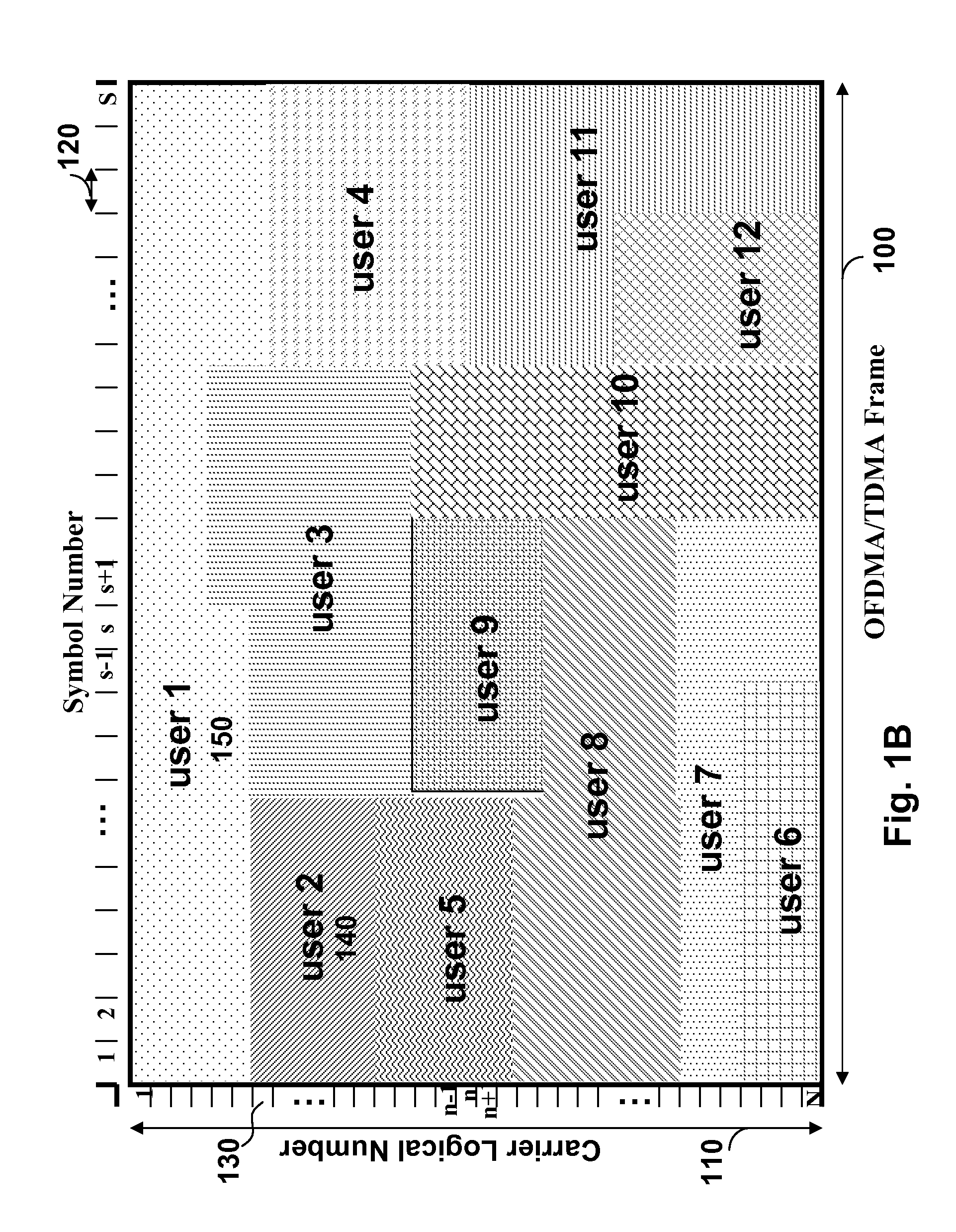Joint Carrier Allocation and Time Sharing for OFDMA/TDMA Networks
a carrier and network technology, applied in the field of carrier allocation and transmission time sharing among multiple transceivers, can solve the problems of algorithm not taking into account practical problems, set of resource allocation problems,
- Summary
- Abstract
- Description
- Claims
- Application Information
AI Technical Summary
Benefits of technology
Problems solved by technology
Method used
Image
Examples
Embodiment Construction
[0023]As shown in FIG. 1A, a multi-user, multi-carrier network according to embodiments of our invention includes a central controller or base station (BS) and K distributed users (mobile stations MS). The central controller can be the base station (BS) in a wireless cellular network where the users are mobile stations (telephones). The central controller and each of the K mobile station include a transmitter and a receiver (transceiver). In general, “users” as referred to herein can be user equipment (UE) such as cell phones, transceivers, computers, stations, terminals, and generally nodes.
[0024]In wireless personal, local and metropolitan (PAN / LAN / MAN) networks, the central controller can be an access point (AP), and the K users can be a set of client nodes accessing a backbone network via the AP. In the area of industrial automatic control, the central controller can be a master node that communicates with K slave nodes.
[0025]A method according to embodiments of our invention co...
PUM
 Login to View More
Login to View More Abstract
Description
Claims
Application Information
 Login to View More
Login to View More - R&D
- Intellectual Property
- Life Sciences
- Materials
- Tech Scout
- Unparalleled Data Quality
- Higher Quality Content
- 60% Fewer Hallucinations
Browse by: Latest US Patents, China's latest patents, Technical Efficacy Thesaurus, Application Domain, Technology Topic, Popular Technical Reports.
© 2025 PatSnap. All rights reserved.Legal|Privacy policy|Modern Slavery Act Transparency Statement|Sitemap|About US| Contact US: help@patsnap.com



